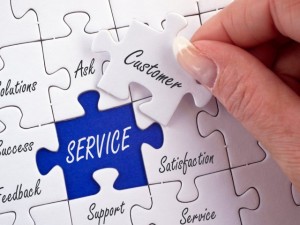 Kathryn Clarke, Managing Consultant at Capita Customer Management, considers current customer expectations when dealing with companies, how digital contact strategies often fail, and presents five key ways to make such strategies work.
Kathryn Clarke, Managing Consultant at Capita Customer Management, considers current customer expectations when dealing with companies, how digital contact strategies often fail, and presents five key ways to make such strategies work.
Businesses across all sectors operate in a challenging and changing environment and rely on factors such as economic growth, consumer spending and confidence, and credit conditions to succeed. Focusing on customer expectations can help businesses to face these challenges and regularly reviewing the way in which customers can make or receive communication should be a priority.
Increasingly, consumers believe they should be able to contact a company in any way that suits them. They no longer expect companies to use social media to just convey marketing messages, they also require two way communication for queries, compliments and complaints. Many companies still overlook this fact and don’t have a digital strategy in place. When they do implement a strategy they often fail to execute it well. To put these expectations into context, the average response time on Twitter is six and a half hours, with customers increasingly expecting a response in less than two. An email response takes an average of eight hours and customers expect it in less than four.
Not getting your digital strategy right can drive customers away. 89% of consumers will stop buying from a company after one bad experience. However, get it right and a third will demonstrate their loyalty and go on to spend more with you. These figures speak for themselves and show that you can’t afford to deliver a digital strategy that doesn’t meet your customers’ expectations.
Here are five key areas to consider when developing an effective digital strategy:
1. Know your customer
What motivates and frustrates your customers, what do they need, how do they feel when dealing with you and how do they communicate with you? You have to understand this to ultimately mould your strategy and meet your customers’ expectations. Once you have identified their profiles, you can develop a strategy with those customers firmly in mind.
2. Map the customer journey
Once you know your customers, you need to understand how they interact with you and identify the possible touch points they come across during their journey while buying from you or when submitting queries. These could include targeted promotions via SMS, additional incentives for completing transactions online, email communication and credit checks over the phone are all key touch points.
You should identify gaps in the journey as well as unnecessary layers that require a high level of customer effort. Recognise areas in which you are successful and develop these across other channels or service lines. Customers rarely make a distinction between different channels such as email, phone and SMS, and view them as part of a single journey, one which can often fail to meet their expectations. They care about the overall experience and base their opinions of you on that alone.
It is more than likely that your customers encounter recurrent hurdles when they navigate from one channel to another and it’s possible that from your perspective, these small gaps in service are trivial. One well known payment provider, for example, supplies its customers with an email address for contacting them. However, those who do so receive an automated email in response which states that the company prefers to be contacted by phone.
3. Review your channels
With your service ecology mapped, it’s time to move on to the communication channels themselves. In many sectors, especially retail, the channels are owned and managed by different teams or agencies, which operate in their own silos with their own goals. This often leads to a more complex customer experience, which is frequently complicated or even broken. Before you set your channels, know what you want to achieve. Do you want to provide world class customer service via the right channel at the right time? Do you want to increase customer advocacy and trust?
Compare best practice outside your industry and take time to explore each channel and draw a clear picture of where the customer experience fails or works.
4. Know your market
Some trends, characteristic of the retail market, will affect a number of different sectors. Retailers need to be able to connect with their customers across multiple channels, often at the same time. A shift towards mobile payments will push retailers to better develop their mobile technology. Customers now expect a more personal service both online and in-store with integrated technology within the stores. Retailers are, therefore, beginning to introduce a digital proposition in store, which is aligned with their customers’ online journey and meets their continuous need for speed. One high-end clothing brand now uses digital outlets throughout their stores to show catwalk videos, showcase their latest collections and play appropriate music.
5. Understand your strengths and know your limitations
As discussed previously, it is essential to leverage what you are already doing well in the digital space and to avoid re-inventing anything that’s already working. Understand how specific technology may impact your intentions, for example, do you have the right infrastructure to successfully support your chosen digital channels and are you prepared to take on a cycle of investment to keep your channel options up to date? To complement the technology, do you have the right people in place, on the front line managing Twitter, or behind the scenes driving the evolution of your strategy?
Understanding today’s digital landscape is difficult for any business. Making it relevant for yourself and your customers is even harder. However, if you know your customers and have a clear digital strategy, you can empower them to take control of the way they communicate with you, allowing them to choose the right channel for their needs and circumstances. Meeting their expectations across these channels will enable you to reap the benefits through invaluable customer loyalty.
 Kathryn Clarke – Managing Consultant, Customer Experience & Digital Strategy – Capita Customer Management.
Kathryn Clarke – Managing Consultant, Customer Experience & Digital Strategy – Capita Customer Management.
For additional information on Capita Customer Management Click Here




